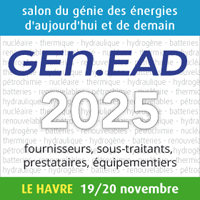octo.
06
2009 | From financial crisis to 450 ppm: the IEA maps out the energy sector transformation and its financial consequences under a global climate agreement
The financial and economic crisis has had a considerable impact on the energy sector worldwide. Investment in polluting technologies has been deferred and CO2 emissions could fall in 2009 by as much as 3% - steeper than at any time in the last 40 years, finds the International Energy Agency (IEA) in its new study, a special early excerpt of the World Energy Outlook (WEO) 2009. This would lead to emissions in 2020 being 5% lower – even in the absence of additional policies -- than the IEA estimated just twelve months ago. The economic downturn has thereby created an opportunity to put the global energy system on a trajectory to stabilise greenhouse gas emissions at 450 parts per million (ppm) of CO2-equivalent, in line with an increase in global temperature of around 2 degrees Celsius. Presenting the excerpt at the UNFCCC climate change talks in Bangkok, IEA Executive Director Nobuo Tanaka said, “This gives us a chance to make real progress towards a clean-energy future, but only if the right policies are put in place promptly. The success of the UNFCCC process is crucial in this regard.”
“The message is simple and stark: if the world continues on the basis of today's energy and climate policies, the consequences of climate change will be severe. Energy is at the heart of the problem – and so must form the core of the solution. For this very reason, following discussions with IEA member governments and the UNFCCC Secretariat, I took the unprecedented decision to present an exceptional early release today of the climate change work of our flagship publication WEO 2009 to provide a timely contribution towards a landmark agreement in Copenhagen,” said Mr. Tanaka.
The IEA 450 ppm Scenario sees the use of fossil fuels peak before 2020, and energy-related CO2 emissions just 6% higher in 2020 than in 2007. Relative to a Reference Scenario of current policies, emissions in 2020 would need to be reduced by 3.8 gigatonnes (Gt) worldwide to achieve the 450 Scenario. 1.6 Gt of this reduction occurs in OECD countries, while policies and measures in China – already being considered by the Chinese government – account for 1 Gt of emissions reductions, more than anywhere else. This underlines the leading role China will play in the global combat against climate change.
To achieve this energy revolution, incremental investment of USD 10 trillion will be necessary between 2010 and 2030 in the energy sector - equivalent to 0.5% of global GDP in 2020, rising to 1.1% of GDP in 2030. Yet fuel savings across industry, transport and buildings total USD 8.6 trillion between today and 2030, similar to the additional investment in these sectors.
“The biggest challenge will be to ensure there is funding to back this energy transformation, with substantial support for developing countries,” said Mr. Tanaka. “In 2020, the energy sector in non OECD countries would need to make USD 200 billion of extra investments in clean power, energy-efficiency measures in industry and buildings and next-generation hybrid and electric vehicles. For this, developing countries will need some financial support from OECD countries. OECD domestic investment needs amount to a further USD 215 billion in 2020. But the benefits, in terms of energy savings, reduced fuel imports and air quality improvements offset much of this extra cost, not to mention the fact that this will help to avoid extreme climate change.”
Concluding, Mr. Tanaka stressed that “The IEA 450 scenario is the energy pathway to Green Growth. Yet we need to act urgently and now. Every year of delay adds an extra USD 500 billion to the investment needed between 2010 and 2030 in the energy sector”.
The WEO-2009 excerpt sets out, for key countries and regions (including the United States, Japan, the European Union, Russia, China and India), the energy transformation that each might undertake, sector by sector, if the world were to adopt a 450ppm trajectory. It also describes the current trends in energy use and emissions in a fully updated Reference Scenario, detailing the implications of current policies and taking into account the global financial and economic crisis.
The entire WEO 2009 will be launched in London on 10 November 2009 and contains substantially more climate analysis than that presented in the excerpt. It analyses the full impact of the financial crisis on the energy sector, provides a comprehensive set of results, by sector and by region, for both the Reference Scenario and the 450 Scenario, and analyses the international financial flows and mechanisms that might underpin a post-2012 agreement. WEO 2009 also contains major studies on global prospects for national gas markets and energy trends in Southeast Asian countries.
Source : Communiqué IEA
Voir la fiche de l'entreprise IEA
| |
|
|






  
|